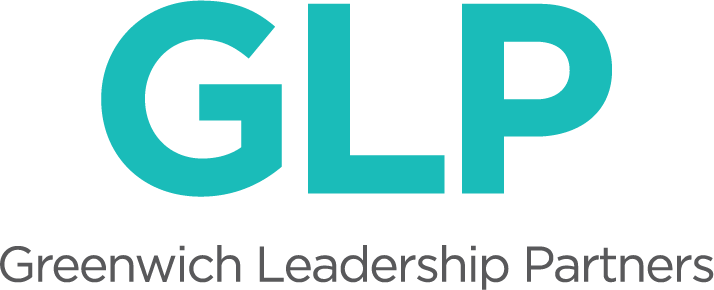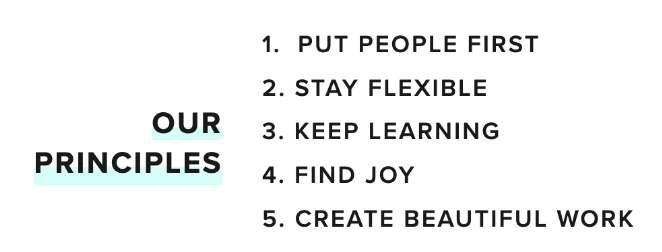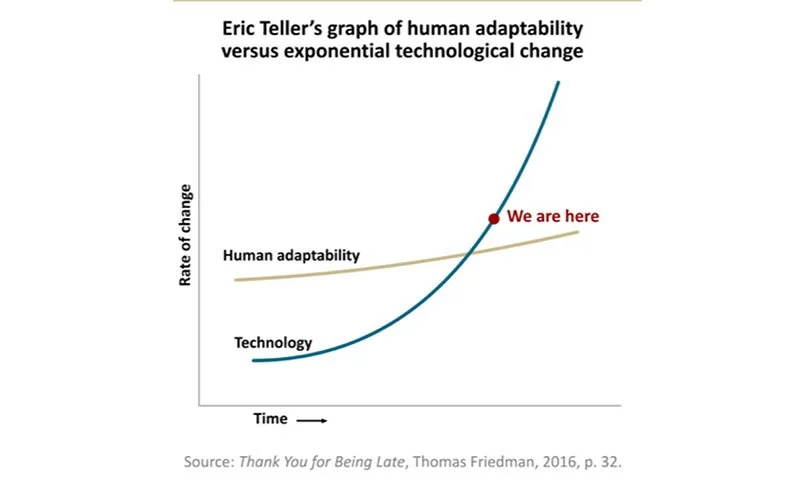In our work with K-12 schools, universities, and not-for-profits, GLP emphasizes the need to establish a shared set of core values that serve as essential filters for organizational priorities, practices, and policies. Clearly articulated and purposefully cultivated core values foster a deeply connected community and positive experience – for ALL.
For ourselves, the GLP team has named the following principles for our work with clients and our collaborations as a team:
Our focus on JOY is not accidental and not merely about “having fun”. It's about enjoying the work and the relationships we make along the way. It’s about valuing the people we work with.
JOY is about forging connections and doing purposeful work that matters.
It’s a cliche to say, but… “Now more than ever”, JOY is an essential element of learning that our schools, educators, and students desperately need to reclaim.
Over the past three years, much has been made of the negative impact of COVID-related stresses on student and educator well-being, engagement, and performance. The phrase “learning loss” has been turned into a mourner's lament as schools grapple with the long term impacts on student learning and glaring inequities revealed by student performance data, including attendance and test scores.
To be frank, the term “learning loss” gives me the heebie-jeebies. It’s classic deficit mindset language that communicates to our students and teachers that they are already behind the 8-ball and better “catch up” or get left behind.
But what are we “catching up” to?
More often than not the answer is performance on standardized tests and the proposed “fix” is more intensive instruction focused specifically on test prep. Approaches that we already know quash students’ curiosity and intrinsic motivation and, in the end, result in shallower and less “sticky” learning.
As so eloquently described by Susan Engel (author of the book The Intellectual Lives of Children) in a February 2021 Harvard EdCast interview and quoted in the excellent Harvard GSE Ed Magazine article “A Space for Joy”:
“I heard a first-grade teacher say to me, back in August, when she was planning her remote teaching, she said, ‘The parents are so worried that their children aren’t going to keep up this year.’ And I said, ‘Keep up with what?’ And she looked surprised, and she said, ‘Well, with the standards.’ But I mean, the standards are completely arbitrary. Who made up those standards? Just a lot of people sitting in rooms. I don’t know. And I’m not sure they were good standards in the first place, but it’s silly to let those constrain you too much as a teacher right now.”
I couldn’t agree more! Standards -- when used healthily -- are a deeply valuable tool. They can help educators develop consensus about essential skills, mindsets, and capacities while also ensuring that all students are given the gift of high expectations combined with deep support. However, post-COVID we can still have high expectations for the performance of our learners and educators without demanding adherence to arbitrary proclamations of “But, you should already know this!” -- or be able to do that, or have arrived at a specific destination -- “by now!” We can “meet students where they are” without sacrificing high expectations for all!
What we really need to “catch up” on -- what learners and educators really lost during COVID-related disruptions -- is JOY. That’s where we need to recommit -- in forging connections between educators and learners, creating the community conditions that will allow for deep, meaningful learning and promote intrinsic motivation and resilience.
So how do we do that? How can we intentionally cultivate JOY in the classroom? Essentially, it’s about fostering spaces of shared ownership and purpose.
Start by building trust with and between students, “slowing down to move fast”. I like to begin the year with low-stakes collaborative problem solving challenges. Favorites include the Marshmallow Challenge, Inquiry Cubes, and the Paper Bridge Design Challenge. These challenges allow students to develop shared purpose and to reflect on conditions that foster collaboration and strong teamwork. Deliberately involving students in drafting shared classroom norms and establishing a “Team/Classroom Charter” also helps ensure that students develop a sense of ownership and responsibility for both culture and learning.
Commit to pedagogies of purpose. Project-based learning, place-based learning, experiential learning, Socratic seminars and more! What do all of these powerful approaches to learning design (and assessment!) have in common? First, a commitment to student-led learning that centers student interests, choices, and agency while fostering critical thinking, problem-solving, and creativity. Second, connection to real-world events, issues, and questions that establish a shared sense of purpose and urgency. Third, intentional instruction, support, and modeling for effective student collaboration to wrestle with and “make meaning” around complex ideas and problems.
Commit to authentic assessment. Student exhibitions, student-led conferences, presentations of learning, collaborative exams and other approaches to assessment can ensure that student work is appreciated by more than “an audience of one” -- turning assessments into powerful learning experiences in and of themselves. Authentic assessments shift the emphasis away from just earning points and letter grades to producing quality work that matters.
Let’s reclaim what school can be. Bring back JOY and the rest will follow. Attendance, educator retention, student learning, and -- yes -- those darn test scores too.
For more about the power of JOY and how to cultivate it with your team and in your classroom, see:
Dickson, D. “How I’m Putting the Joy Back in Teaching This Year,” EducationWeek. August 8, 2022.
Heinze, C. “5 Strategies for Incorporating Joy in the Classroom,” The 74 Million. March 6, 2023.
Hough, L. “A Space for Joy,” Harvard GSE Ed Magazine. May 27, 2022.
Liu, A. “Making Joy a Priority at Work,” Harvard Business Review, July 17, 2019.
Opitz, M. and Ford, M. (2014). Engaging Minds in the Classroom: The Surprising Power of Joy. ASCD. 978-1-4166-1633-7.









